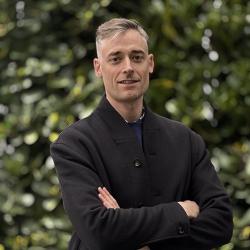Biography
Henning von Mirbach is Assistant Professor of Early Modern Chinese Art. In his teaching, he focuses on the painting and visual culture of late imperial China (ca. 1200–1800), with particular emphasis on the local and global entanglements of the artworks under discussion. Henning’s research reconsiders the history of landscape painting in early modern China by foregrounding overlooked agents and expanding the field’s geographic and conceptual scope.
His current book project, Maternal Landscapes: Women and the Politics of Commemoration in Early Modern Chinese Art, challenges conventional boundaries between court and literati art. It explores regionally diverse practices that shaped artistic engagements with landscape in the 17th and 18th centuries, centring the roles of mothers and grandmothers as key figures in artistic production, commemorative practice, and the formation of spatial memory. While the project adopts a local lens, it aims—similar to connective histories—to unsettle nationally bounded narratives of early modern art history.
Originally from Bonn, Germany, Henning holds terminal law degrees from the Université Paris X – Nanterre in France and the Universität Potsdam in Germany. He received his PhD in Chinese art history from the University of California, Santa Barbara. Before joining the University of Cambridge, he taught at The Courtauld in London and at National Taiwan Normal University in Taipei.
Publications
Recent articles
“Playing Time and Playing Place: Lee Chun-Yi’s Mountain Moved? Heart Moved?,” in Mountain Moved, Heart Moved: The Art of Lee Chun-Yi, ed. Hsu Shan (Taipei: Mingshan Art Collection, 2024), 13–17.
- Chinese translation: “Wan shijian wan difang: Li Junyi de ‘Shan dong? Xin dong?’ 玩時間玩地方——李君毅的《山動?心動?》, Yishujia 藝術家, no. 588 (May 2024): 340–345.
“The Jiaoshan Tripod and the Reconstitution of the Scholarly Community in Early Qing China,” co-authored with Yun-chen Lu, Ming Qing Studies 13 (2022): 99–137.

